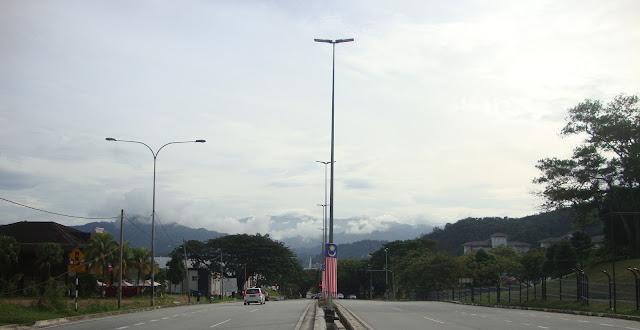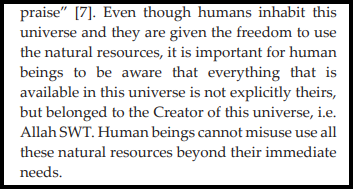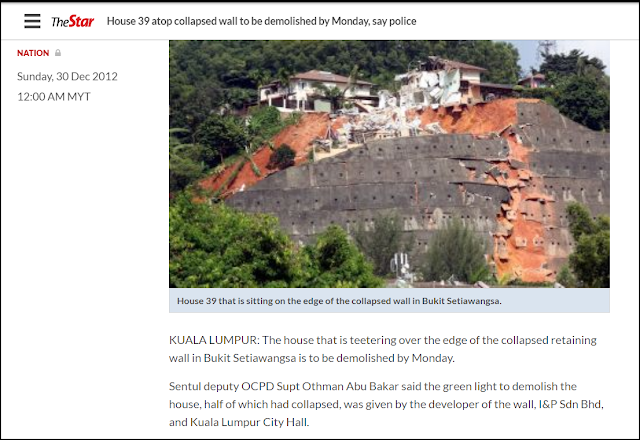When I was in Primary Six at Pasir Panjang English School, Singapore in 1957, we had to be able to fill in a sketch map of Malaya with various geographical details as required by the school syllabus.
This morning, on our way home from breakfast, I made the spouse stop the car to let me snap a few more pictures of my much-loved Banjaran Titiwangsa. In my 1957 map, Banjaran Titiwangsa was known as merely the Main Range! What a put-down name for the backbone of the Malay Peninsula.
 |
| Banjaran Titiwangsa as seen on the road from Sri Rampai to Setiawangsa. |
 |
| Banjaran Titiwangsa, if you can appreciate it behind the clutter of development. |
 |
| Banjaran Titiwangsa and her magnificient limestone outcrops, again overshadowed by the ugly pinnacles of development and greed. |
I shall savour such views of my mountain-backbone - but I fear that in 30 or 50 years' time or even sooner, "some rich men (will) come and rape" (2.42 in the video) those mountains.
From the age of 13 (Primary School), through my Senior Cambridge, Higher School Certificate and my degree at Singapore University, geography (and maps especially) has always been my favourite subject, yet nowhere was I made aware of how tin mining and the clearance of forests for rubber had ravaged the environment of the Semenanjung in the pursuit of profit and "progress". In the time of my youth, I suppose few people thought about challenging and criticising the desecration of the landscape in the non-western parts of the British Empire by the Brits and their compradores.
However, in one of my spouse's old books - "Illustrated Guide to the Federated Malay States" (1923) edited by Cuthbert Woodville and illustrated by Mrs H.C. Barnard - I noticed a reference, bland though it may be , to what happens to a valley as a consequence of tin mining:
 |
| A river valley dug, flooded, scraped and scoured for tin as noted in 1923. |
When I got home, I decided to check "The Last Resort", one of my favourite songs by the Eagles. It encapsulates so much of what has, is, and will happen to the beautiful landscape of our Tanah Air.
The rape of the land of the First People (The "Red Indians" ) in USA was based on the ideology of the Manifest Destiny (referred to as "destiny" in the above song). "We satisfy our endless needs, justify our bloody deeds. In the name of destiny, in the name of God" (5.11).
As for Malaya, the violation of the Semenanjung's landscape was engineered by British Imperialism and powered by imported labour, merchants, traders and administrators from China and India especially after the Pangkor treaty.
Here is a sample of the instigation and drive to develop(?) and exploit (?) the resources of the Semenanjung
I was quite taken by this Youtube comment on the Eagles' song:
" .... a simple fact that no white man (me included) could ever love this land as much as any Native American, they fought for over 400 years to keep their home and we just kept pushing and pushing them......" by Robert Flor.
On the matter of love and respect for their land, can the bumiputra Malay-Muslim be compared to the Native American? Unfortunately not, I fear, despite Islam's teaching that we Muslims are supposed to be the Stewards of Creation :
 |
| "Cannot misuse all these natural resources beyond their immediate needs" |
When we, in our arrogance decide to place our abode in locations that threaten and abuse nature .....
....... then we and others in the vicinity have to pay a price.
We desire (and developers are always happy to feed that wish and vanity) that our abodes be built on high land or high slopes so that we can get a much-envied exclusive view and establish that we have achieved high stature in our life style.
We desire such elevated locations because it will promise us high returns on investment.
We also desire such lofty positions because it ensures good feng shui.
So when I noted several banners appearing in Setiawangsa .....
...... I decided to look up the background of Bukit Dinding.
For the past six to seven years, we have seen a growing number of youngsters, both male and female ( almost 100% Malays) gathering on weekends and public holidays to hike along the path that goes up Bukit Dinding. Good for them, we said. Sometimes we can see almost 100 cars sitting along the road, as well as motor bikes and bicycles - all, as a rule, conscientiously parked. It is a sight worth remembering. So the preservation and protection of Bukit Dinding means a lot - not only to the residents at the bottom of the hill - but to these youngters enjoying a good healthy exercise instead of parking themelves in front of the TV or wandering around shopping malls.
I was quite curious about that route up the slope. So four days ago on a weekday afternoon when there wouldn't be any walkers this late-septuagenarian decided to give it a look.
Bukit Dinding and all the surrounding areas were once - before the British came - a tropical rain forest. They were then sold or bestowed for planting thousands and thousands of acres of rubber. Then urbanization created new owners, and now these owners are allocating these prime areas for huge new housing developments.
 |
| This view of Bukit Dinding will be obliterated in a couple of decades or maybe earlier. Image taken from Malay Mail 9 Oct 2022. |
This fate of Bukit Dinding as envisaged by the developer Nova Pesona.
Nova Pesona according to ctos .....
....... and Nova Pesona is a subsidiary of .....
..... IGB (Ipoh Garden Berhad). A corporate profile of IGB Berhad writes : it is "primarily a property company engaged in all aspects of the property industry. Its core business is in retail, commercial, residential, construction, and hospitality. The company also has investments in water treatment, information technology and data analytics and education.
IGB Berhad is one of the largest listed property companies in Malaysia with footprints across Asia, Australia, the United States of America and United Kingdom,"
As for Nova Pesona, according to the Malay Mail ( 9 Oct 2022)
I find it quite mind-boggling how such hills and mountains (let alone lowlands) can be owned by "private developers". It is like accepting that large parcels of The Great Wall of China or the Cheviot Hills or Yorkshire Moors can now belong to private developers!
But, there's no way that the Chinese and the Brits will allow themselves to be caught or manoeuvred into the same situation as the Semenanjung Malays faced all those years ago.
Hopefully, the campaign for Saving Bukit Dinding will not be regarded as just another Nimby (Not in my Backyard) attempt to preserve the sanctity of their homes at the foothills of Bukit Dinding - although these are certainly under constant threat of soil erosion where they are and any more pressure of "development" by property developers will exacerbate their situation. These residents are confronting a very powerful property corporation and hopefully DBKL will take a strong stand in choosing stability (for the hills and the homes ) over profit.
This campaign should be an eye opener, for Malays especially, that no more of the Tanah Pusaka - the hills, forests, mountains, sea-shores - shall be "pledged, hocked, pawned, peddled, marketed, mortgaged and auctioned ....... to the highest bidder and their middle men and agents - though all too often we still get shortchanged" (as AsH has said before!)
Despite Merdeka, despite increasing wealth, despite the investment in religious and secular education, Malays have succumbed to corruption, cronyism and nepotism and now as we can see at every election and proceedings in Parliament, they are scratching out each other's eyes for bigger and bigger slices of the booty in the name of the Rakyat and democracy.
Here's an illuminating blast from the past.
I recall this quote from Punch, 1878.


















I can’t but admire on the way of your narration which is unique, simple and covers a lot of subjects. What I like most is the way you relate the history of our country that affects your life and this is excellent if we can tell our children and children’s children about our past with the hope of a better future. Tahniah and please continue writing. Wish you have a bigger crowd.
ReplyDeleteSalam,
Hantu Siber
ReplyDeleteSalaam, please write more to defend Bukit Dinding, as it is a worthy cause.
Damn with the greedy so-called investor or property developers who couldn't care less about degradation and loss of heritage simply because of their unending lust for money and greed.
ReplyDeleteYoung people are blinded by fancy houses on the hillslope and their modern designs and forget the destruction of the heritage of Bukit Dinding development is allowed to continue, the developers are banking on this situation.
Older people should do their bit to save their heritage and the environment.